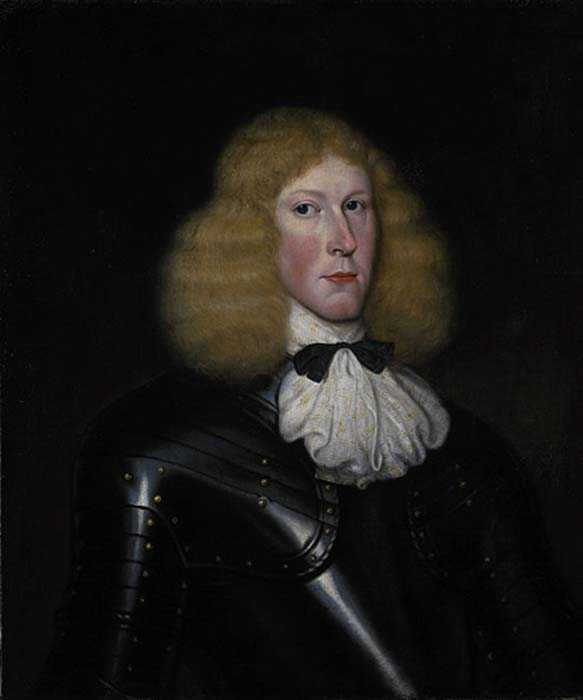
Robert Campbell, 5th Laird of Glenlyon, was born in 1632 and is best remembered for commanding the Scottish government forces that carried out the Massacre of Glencoe.
The Campbells of Glenlyon were a cadet branch of the Campbells of Glenorchy who in turn were a cadet branch of the larger Campbells of Argyll.
The first laird of Glenlyon was Archibald Campbell (1490-1552), son of Duncan Campbell, 2nd Laird of Glenorchy and Lady Margaret Douglas Moncrieff.
The Glenlyon family seat was at Meggernie Castle in Glen Lyon, which is believed to have been built by Colin Campbell, 3rd Laird of Glenlyon (b.1520) around 1582.
Glen Lyon is the longest enclosed glen in Scotland and runs for 34 miles from Loch Lyon in the west to the village of Fortingall in the east.
The barony of Glenlyon ran from Tyndrum in the west to Appin of Dull in the east.
Robert Campbell, 5th Laird of Glenlyon was the eldest son of Archibald Campbell, 4th Laird of Glenlyon (d.1640) and Jean Campbell, daughter of Sir Robert Campbell (1575–1657), 3rd Baronet and 9th Laird of Glenorchy.
In 1663, Robert married Helen Lindsay, daughter of Sir Alexander Lindsay 1st Baronet of Evelick. The couple would have eight children.
Robert inherited an estate that was in serious financial difficulties, made worse by his extravagance and the spending of vast sums of money renovating Meggernie Castle, substantially enlarging it and turning it into a stately home which was completed around 1673.
Gambling and a string of unwise investments pushed him to the brink of bankruptcy.
In order to raise money, Robert sold off all the woods of Glenlyon which were part of the ancient Caledonian forest. The trees were cut down and floated down the River Lyon, which choked the river, causing widespread flooding and further damaging his financial position.
Unable to satisfy his creditors, his own tenants offered him half their cattle to pay off his debts but he refused and sold almost all of the estate to the Earl of Tullibardine in 1684. All that he retained was Chesthill, a house and small estate between Glenlyon and Fortingall, which belonged to his wife.
In 1689, on their return from the Battle of Dunkeld, the Macdonalds of Glencoe along with with the Macdonells of Glengarry looted Glenlyon, stealing livestock, and razing Robert’s last remaining holdings, increasing his financial problems.
In April 1691, with his financial position in ruins, Robert now aged 59 was forced to take a commission in the Earl of Argyll’s Regiment of foot. In early 1692, the regiment moved to Fort William to reinforce Colonel Hill’s regiment.
On 1 February 1692, the Earl of Argyll’s Regiment of Foot, under the command of Major Robert Duncanson, marched out from Fort William and headed south to Ballachulish.
A detachment of two companies numbering 120 men under Captain Robert Campbell of Glenlyon continued on to Glencoe. They had orders for ‘free quarter’, claiming that there was no room at Fort William because of the large number of soldiers stationed there, and requested hospitality, which the MacDonalds granted.
On the night of 12-13 February, Captain Thomas Drummond of Argyll’s Regiment delivered the orders for the massacre from Major Duncanson to Glenlyon.
You are hereby ordered to fall upon the rebells, the McDonalds of Glenco, and put all to the sword under seventy. you are to have a speciall care that the old Fox and his sones doe upon no account escape your hands, you are to secure all the avenues that no man escape. This you are to putt in execution attfyve of the clock precisely; and by that time, or very shortly after it, I’ll strive to be att you with a stronger party: if I doe not come to you att fyve, you are not to tarry for me, but to fall on. This is by the Kings speciall command, for the good & safety of the Country, that these miscreants be cutt off root and branch. See that this be putt in execution without feud or favour, else you may expect to be dealt with as one not true to King nor Government, nor a man fitt to carry Commissione in the Kings service. Expecting you will not faill in the full-filling hereof, as you love your selfe, I subscribe these with my hand att Balicholis Feb: 12, 1692.
Argyll’s Regiment was sent to fight against the French in Flanders, during the War of the Grand Alliance.
Robert Campbell died in poverty in Bruges on 2 August 1696.
Sources:
Duncan Campbell, The Lairds of Glenlyon.
Paul Hopkins, Glencoe and the end of the Highland War.
